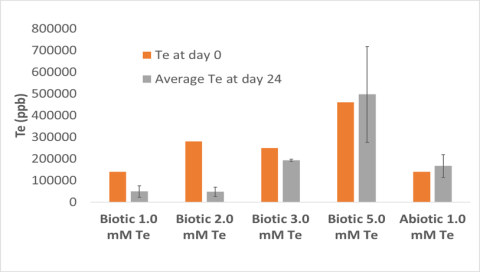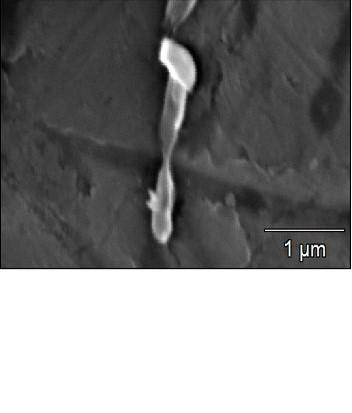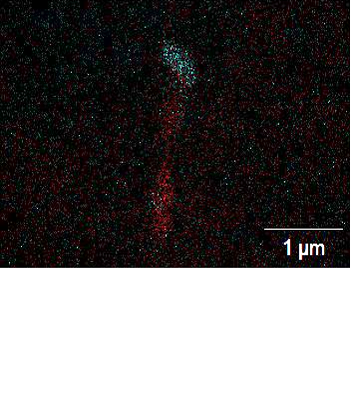
CMI researchers at Idaho National Laboratory, Lawrence Livermore National Laboratory and First Solar conducted the research for this highlight
Innovation
Tellurium-reducing bacteria can transform soluble tellurium to insoluble Te minerals.
Achievement
The bacterium Bacillus selenitireducens was shown to convert soluble tellurite at millimolar concentrations to tellurium nanoparticles.
Significance and Impact
- Selective removal and transformation of Te from aqueous solution offers a potential means for facile separation and concentration of tellurium.
- Next steps would include testing of B. selenitireducens ability to transform Te in real tailings leachates—could enable Te production from domestic copper mining.
Hub Targets Addressed
- Grand challenge: Unlocking unconventional resources.
- Industry adoption of a technology for source diversification for a material other than REE or Li.


